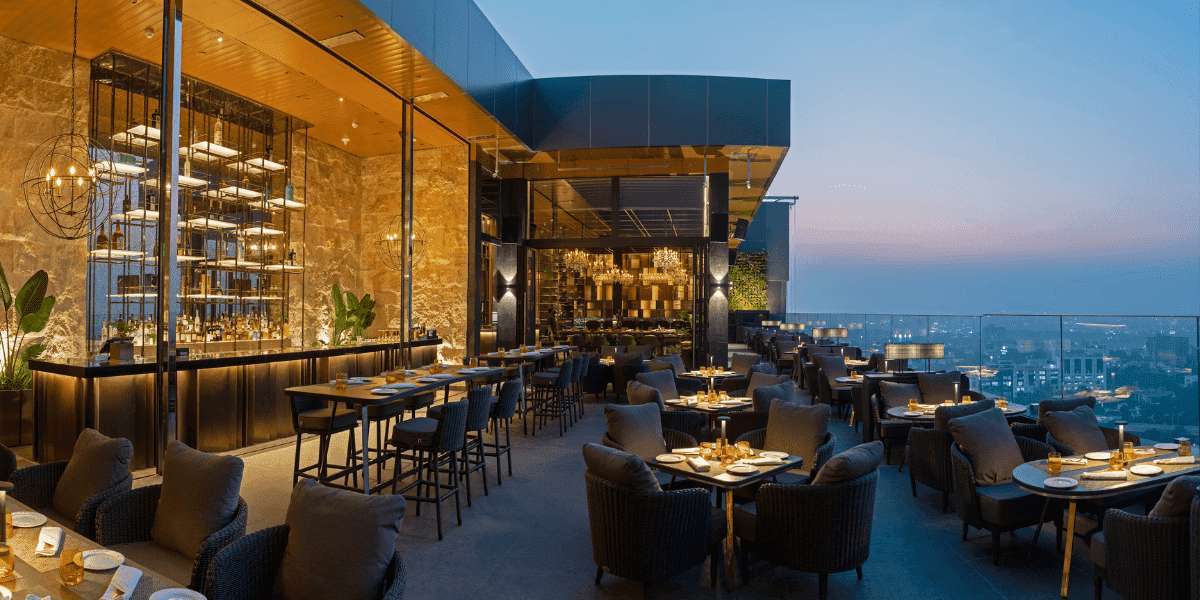The Role of Vastu in Modern Architecture
Vastu Shastra, the ancient Indian science of architecture, has been guiding the construction and design of buildings for centuries. Rooted in harmony and balance, Vastu Shastra aims to create living and working spaces that promote well-being, health, and prosperity. While it has deep historical roots, its relevance extends to contemporary architectural practices, offering a unique blend of tradition and modernity. In this blog, we will explore how Vastu principles can enhance modern architecture and why they are becoming increasingly popular today.
Understanding Vastu Shastra
Definition and Fundamental Principles of Vastu Shastra
Vastu Shastra is an ancient Indian science that combines art, astronomy, astrology, and metaphysics to create harmonious living spaces. "Vastu" means dwelling, and "Shastra" means science, forming a holistic approach to building design. The core idea is to harmonize human existence with nature by aligning architectural elements with the five essential elements: Earth, Water, Fire, Air, and Space.
The Five Elements and Their Importance
Earth (Bhumi) Represents stability and strength. Proper use of the earth element in building foundations and materials ensures structural integrity and longevity.
Water (Jal): Symbolizes fluidity and adaptability. Placing water sources, such as wells, tanks, and fountains, affects energy flow and prosperity.
Fire (Agni): Denotes energy and transformation. The positioning of kitchens, fireplaces, and lighting impacts health and vitality.
Air (Vayu): Indicates movement and growth. Ventilation, airflow, and the location of doors and windows are crucial for maintaining a healthy environment.
Space (Akash): Embodies expansion and openness. The overall layout and spatial arrangement influence mental clarity and spiritual growth.
Key Vastu Concepts: Orientation, Layout, and Energy Flow
Vastu Shastra emphasizes the importance of orientation, layout, and energy flow in architectural design. The direction a building faces, the arrangement of rooms, and the flow of energy within the space are critical factors. North and East are considered auspicious directions, promoting positive energy and prosperity. The layout should balance the five elements with a free flow of energy and minimal obstacles.
Benefits of Vastu in Modern Architecture
Enhancing Harmony and Balance
Incorporating Vastu principles in modern architecture can significantly enhance the harmony and balance of living spaces. By aligning the building with natural forces, Vastu ensures a positive environment that fosters well-being, health, and prosperity.
Promoting Well-being, Health, and Prosperity
Vastu-compliant spaces are designed to maximize natural light and ventilation, reducing the risk of health issues related to poor air quality and insufficient sunlight. Additionally, strategically placing rooms and elements can enhance mental clarity, reduce stress, and promote overall well-being.
Improving Functionality and Aesthetics
Modern architecture often emphasizes functionality and aesthetics. Vastu Shastra complements these aspects by providing guidelines that enhance the usability of spaces while maintaining their visual appeal. The result is a harmonious blend of practicality and beauty.
Integrating Vastu Principles in Contemporary Design
Orientation and Placement
One of the critical aspects of Vastu Shastra is the orientation and placement of buildings. In modern architecture, this translates to optimal orientation for residential and commercial spaces. North and East-facing buildings are preferred, as they receive ample sunlight and positive energy. The placement of rooms and functional areas is also crucial. For instance, the kitchen should ideally be located in the Southeast, while the bedroom should be in the Southwest.
Use of Materials and Colors
Vastu Shastra emphasizes using natural materials and colours that align with the five elements. Modern architects can incorporate materials like wood, stone, and clay to create a sense of connection with nature. Similarly, colours play a significant role in Vastu. Earthy tones like browns and greens enhance stability, while blues and whites promote calmness and clarity.
Spatial Arrangement
The spatial arrangement in Vastu Shastra focuses on creating open, clutter-free spaces that allow for the free flow of energy. In modern architecture, this translates to well-planned layouts that maximize natural light and ventilation. Open floor plans, large windows, and minimalistic designs help achieve this balance.
Successful Integration of Vastu in Modern Projects
Residential Projects
Numerous residential projects have successfully integrated Vastu principles with modern design. For example, a Vastu-compliant home in Sydney, Australia, was designed with a North-facing orientation, open floor plan, and strategic placement of rooms. The result was a harmonious living space that promoted the residents' health, well-being, and prosperity.
Commercial and Office Spaces
Commercial and office spaces can also benefit from Vastu principles. A well-known example is a corporate office in Melbourne, Australia, designed with Vastu guidelines. The office layout ensured optimal energy flow, with workstations positioned to receive natural light and conference rooms located in promising areas. This led to increased productivity, employee satisfaction, and business success.
Challenges and Considerations
Balancing Vastu Principles with Modern Architectural Demands
One of the challenges of integrating Vastu Shastra with modern architecture is finding the right balance between traditional principles and contemporary design demands. Architects must consider factors like structural integrity, functionality, and aesthetic appeal while adhering to Vastu guidelines.
Addressing Misconceptions and Myths
Several misconceptions and myths about Vastu Shastra need to be addressed. For instance, some people believe that Vastu only applies to traditional Indian homes. However, Vastu principles can be adapted to suit any architectural style and geographic location.
Practical Tips for Architects and Designers
To successfully integrate Vastu principles into modern architecture, architects and designers can follow these practical tips:
Collaborate with Vastu Experts: Consult with Vastu experts to ensure accurate application of principles.
Prioritize Natural Elements: Use natural materials and incorporate natural light and ventilation.
Flexible Designs: Create flexible designs that can easily adapt to Vastu guidelines.
Future Trends: Vastu in Sustainable and Green Architecture
Aligning Vastu Principles with Eco-friendly Practices
Vastu Shastra aligns well with sustainable and green architecture practices. Both emphasize harmony with nature and the use of natural materials. Architects can design eco-friendly buildings that promote environmental harmony by incorporating Vastu principles.
Innovations in Vastu-compliant Green Buildings
Innovations in Vastu-compliant green buildings are on the rise. These buildings incorporate renewable energy sources, sustainable materials, and efficient designs to create Vastu-compliant and environmentally friendly spaces.
The Role of Vastu in Promoting Environmental Harmony
Vastu Shastra promotes environmental harmony by encouraging the use of natural elements and sustainable practices. Architects can contribute to a healthier and more sustainable environment by designing buildings that are in harmony with nature.
Conclusion
Vastu Shastra offers a unique blend of ancient wisdom and modern practicality, making it highly relevant in today's architectural practices. By incorporating Vastu principles, architects can create harmonious, balanced, and aesthetically pleasing spaces that promote well-being, health, and prosperity. Integrating Vastu can enhance functionality and a deeper connection with nature when designing residential homes or commercial buildings.
If you want to integrate Vastu Shastra principles into your home or office design, Aunkar Vastu is here to help. Our experts specialize in creating Vastu-compliant spaces that enhance well-being and prosperity. Visit our website to learn more about our services and how we can help you make the perfect environment. Discover the benefits of Vastu Shastra in Australia with Aunkar Vastu.








